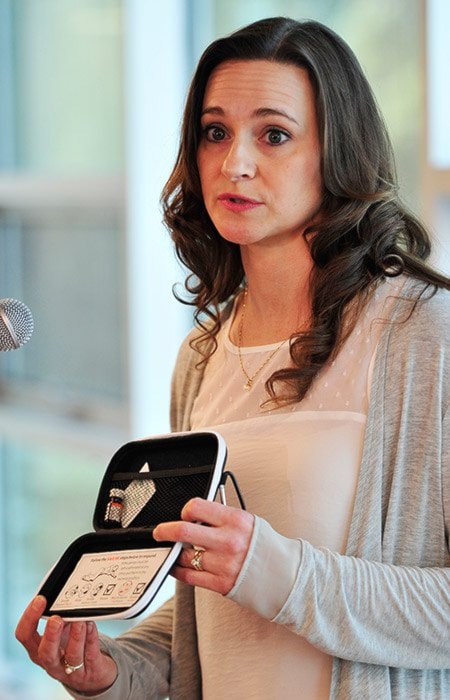Naloxone, the drug used to temporarily reverse the effects of an opioid overdose, will soon be available in more places in the Yukon.
As of the first few weeks in February, take-home naloxone kits will be free at Whitehorse pharmacies, community health centres, and other locations.
That’s on top of the Taiga Medical Clinic and Blood Ties Four Directions Centre, where they’ve been available since last year.
Naloxone temporarily reverses the effects of opioids like fentanyl.
Fentanyl is a synthetic opioid that is 50 to 100 times more deadly than morphine.
Normally used as a painkiller, fentanyl overwhelms the respiratory system, eventually causing a person to stop breathing, said Dr. Brendan Hanley, the Yukon’s chief medical officer of health, at an announcement Jan. 31.
Last year four deaths in the territory were blamed in part or entirely on fentanyl, Hanley said. A fifth death is still being investigated.
There have been no deaths so far this year but hospitals get about one or two overdoses a month where the patient tests positive for fentanyl, he said.
“We know it hasn’t gone away, we know that the risks are still there, and thus this expansion of naloxone is one part of that response.”
The naloxone take-home kits look like a pencil case. Inside are two hypodermic needles, two vials of the drug, instructions on how to recognize an overdose, gloves, and a mask to use during CPR.
Depending on how much opioid a person has taken, naloxone may only last for a few minutes, Hanley said. It’s important to still call 911 if someone is overdosing.
“The naloxone is designed to be an interim measure, biding time, getting some initial revival until definitive help arrives. It is not the only remedy.”
People don’t have to give their name when they come to pick up a kit, said Dr. Sharon Lazeo with the Taiga Clinic in Whitehorse.
Training on how to use naloxone takes anywhere from five to 30 minutes. Some kits are being picked up by people with some medical experience who don’t need too much instruction, she said. Others might go to concerned family members of drug users who want to have a longer conversation.
“We sit down and not only instruct them on how to use the kit, but also they have a few questions that go beyond that,” she said.
“So it’s actually been a nice segue to how you cope with an individual in your circle who’s suffering from addiction.”
So far 53 of the 300 kits purchased by the Yukon government have been handed out.
RCMP officers have also been trained to use naloxone. Unlike the injectable variety being offered by the government, police use a nasal spray to administer the drug.
Whitehorse RCMP Sgt. Calista McLeod said the primary purpose of the naloxone is for officers who may be inadvertently exposed to fentanyl, but it can also be used on someone who is overdosing.
There has been one case where a person showed up at the police station exhibiting signs of an overdose, she said.
Officers used the naloxone spray and the person was brought to the hospital.
Hanley said the government chose to go with the injectable style of kit instead of a nasal spray because it’s been proven effective in British Columbia.
There’s also a sizable cost difference. The injectable kits cost the government about $35 each, compared to $200 for the nasal variety.
According to the Yukon government, opioids such as morphine, heroin and fentanyl are the third-leading cause of substance-related deaths in the territory.
Naloxone has been in Canada for more than 40 years. Last March Health Canada made the drug available over the counter.
More information about fentanyl is available at knowyoursource.ca.
Contact Ashley Joannou at ashleyj@yukon-news.com
